Shibuya is a vibrant and exciting city in Tokyo, Japan that has an array of things to see and do.
It’s home to trendy fashion boutiques, modern cafes, bars, and nightclubs as well as some of the most famous landmarks like Shibuya Crossing – often regarded as one of the busiest crossings in the world with thousands passing through it daily. Visitors can experience Japanese culture at Meiji Shrine or sing their hearts out at karaoke parlors until sunrise.
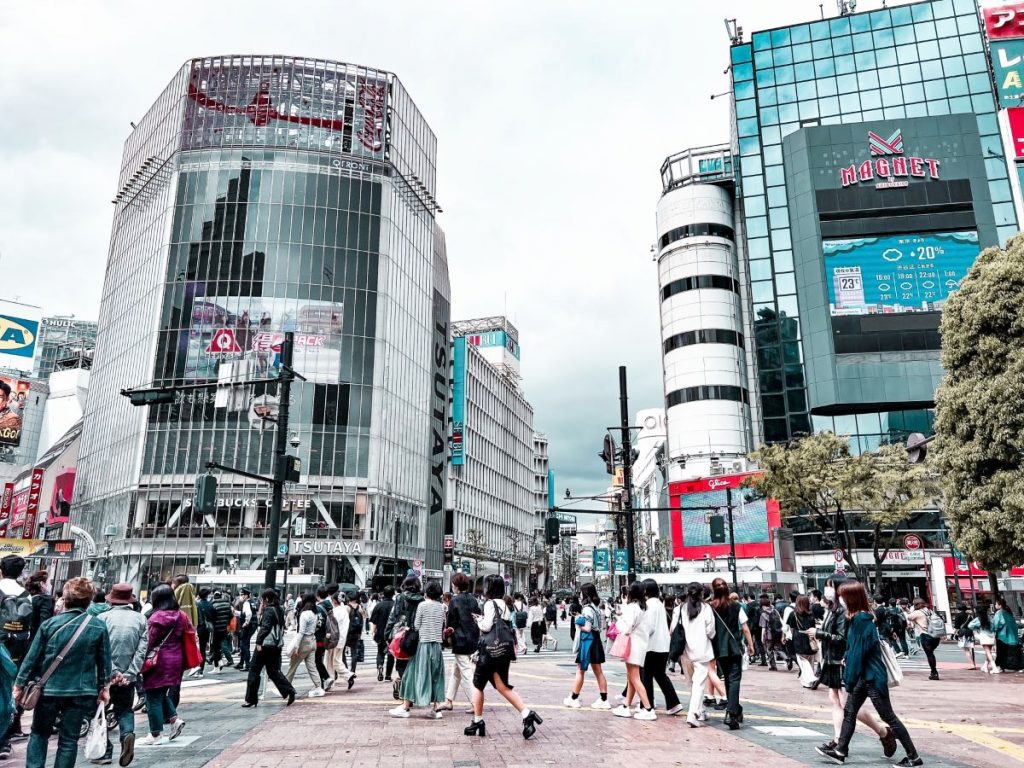
Its unique nightlife scene also provides plenty for shopping fanatics – visitors can spend hours exploring clothing stores on Takeshita Street or browsing endless shops along Center Gai street which are illuminated by bright neon lights after dark.
For those looking for something different, there’s Udagawa-cho arcade where they will find numerous themed establishments such as animal cafés and VR gaming rooms dedicated solely to virtual reality games; offering entertainment
is Shibuya worth visiting?
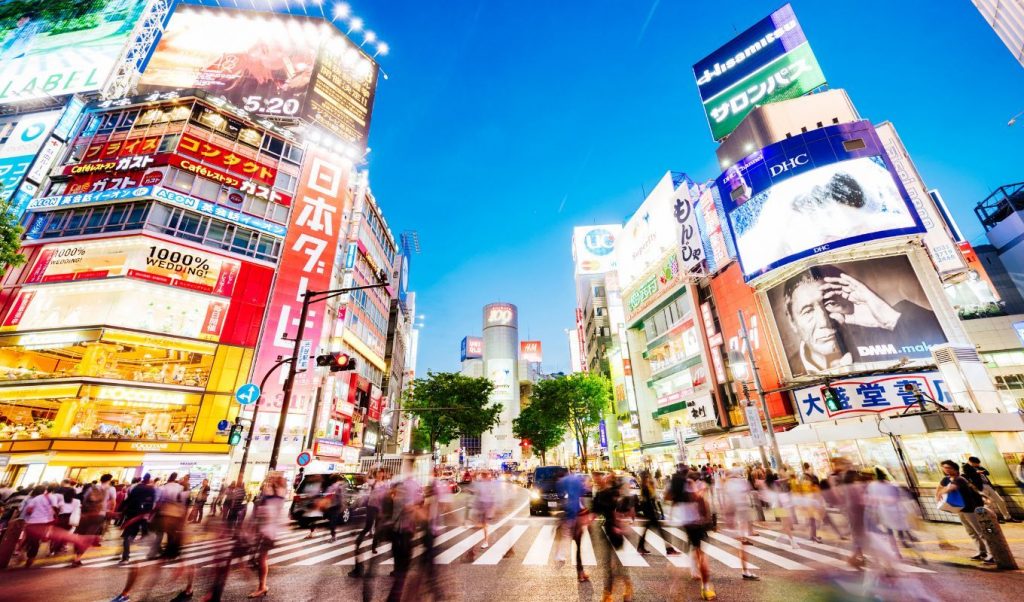
Absolutely.
Shibuya is one of the most exciting neighborhoods in Tokyo, and a visit there will give you an unforgettable experience.
From its mesmerizing neon lights to delicious restaurants, and high-end shopping centers to buzzing nightlife – it’s all here.
You can explore highlights like the iconic pedestrian crossing called ‘Shibuya Crossing’ or relax at parks near Meiji Jingu Shrine.
It’s also home to incredible street fashion scenes that draw curious onlookers from around the world.
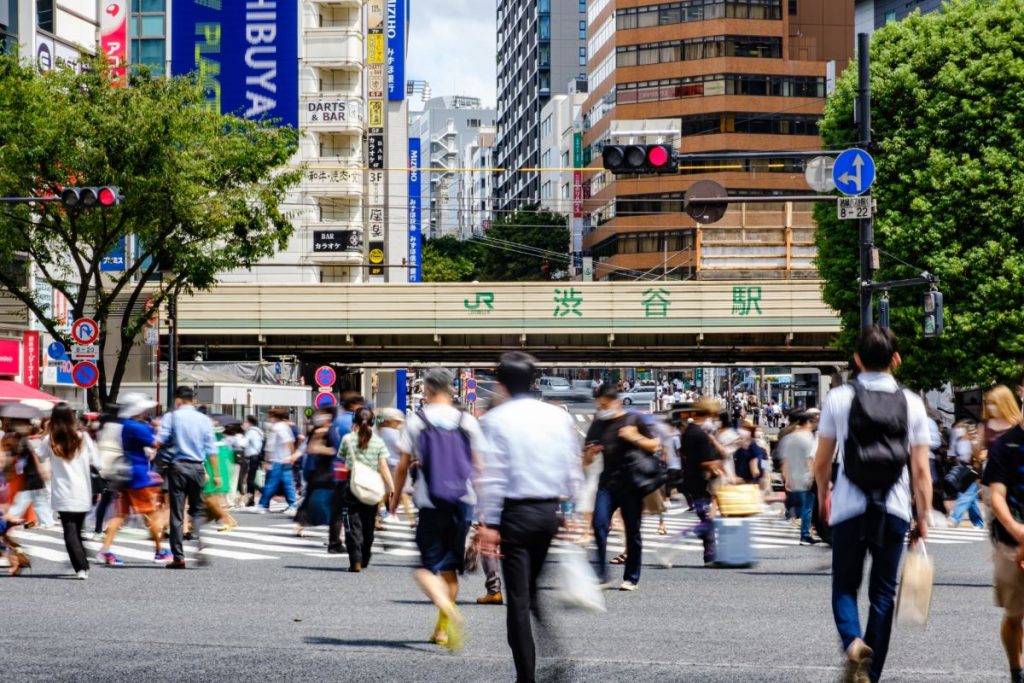
Whatever your interests are – be sure to take some time out for this vibrant district on your Japan trip – it has something special for everyone.
Shibuya SKY

The Shibuya SKY Observation Deck is a must-see for visitors to Tokyo.
Located on the roof of “Shibuya Scramble” – one of Japan’s busiest intersections – here you can take in spectacular views of the city from 202 meters high.
The deck features two observation platforms, each with its own impressive view and interesting facts about Tokyo’s iconic skyline.
On clear days, don’t forget your camera as there are stunning vistas all around; Mt Fuji and Rainbow Bridge being just some examples.
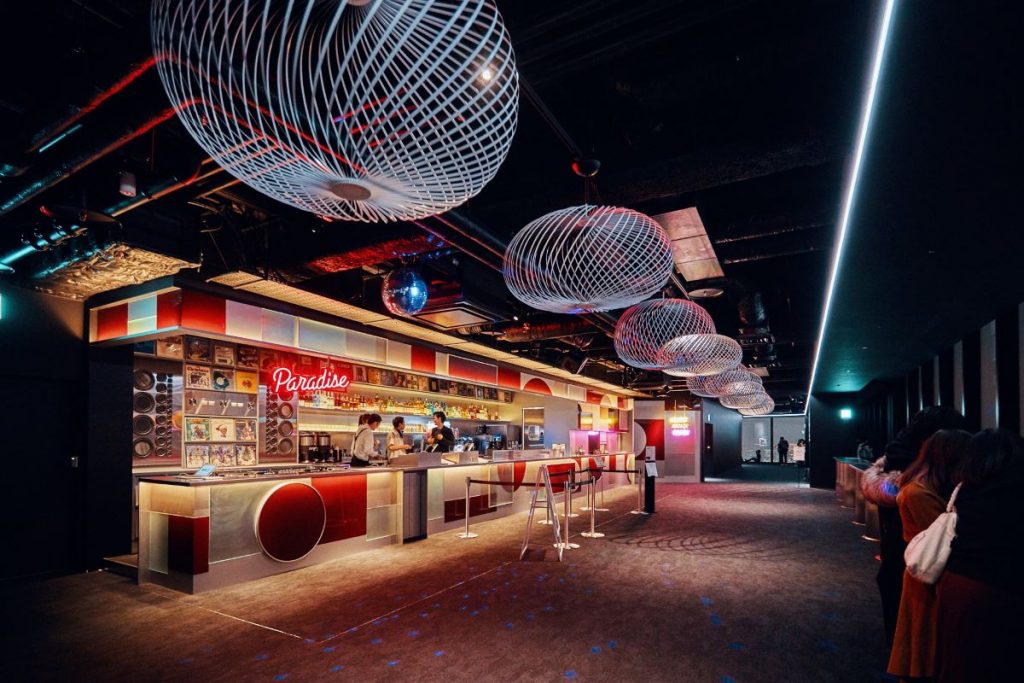
In addition to viewing spots, it also houses an interactive space full of activities such as “zoomers”, which let you virtually explore every corner of Tokyo.
So come join us up at Shibuya Sky for fun and breathtaking sights – trust us when we say this experience won’t disappoint.
Meiji Jingu
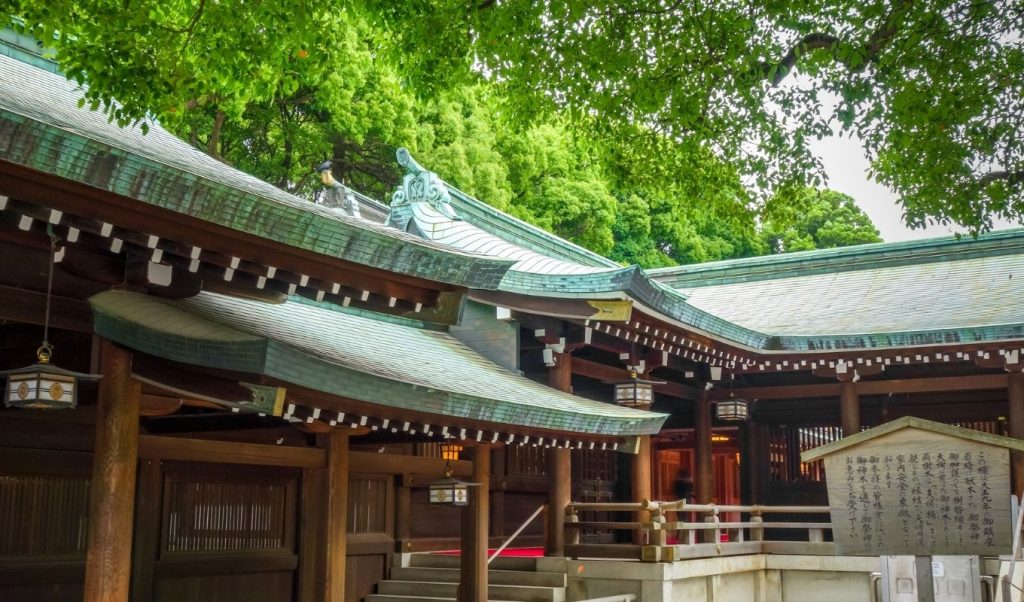
Meiji Jingu is a stunning shrine located in Tokyo, Japan that was built to honor Emperor Meiji and Empress Shoken.
This renowned site offers visitors an unforgettable experience with its lush forest grounds, tranquil atmosphere, and diverse wildlife.
Amongst the trees, you will find over 100,000 evergreen shrubberies representing every prefecture of Japan as well as various species of birds such as songbirds and sparrows creating beautiful music for peaceful strolls through nature’s finest architecture.
At Meiji Jingu, you can also visit two royal palaces where special rituals are held three times each day honoring both the emperor and empress from past generations.
Aside from this incredible history lesson, there are many other attractions to enjoy including traditional tea gardens featuring handmade cakes along with spectacular festivals which feature entertainment like live bands playing folk songs on koto instruments giving authenticity to these timeless experiences at Meiji Jingu Shrine.
Hachikō Memorial Statue
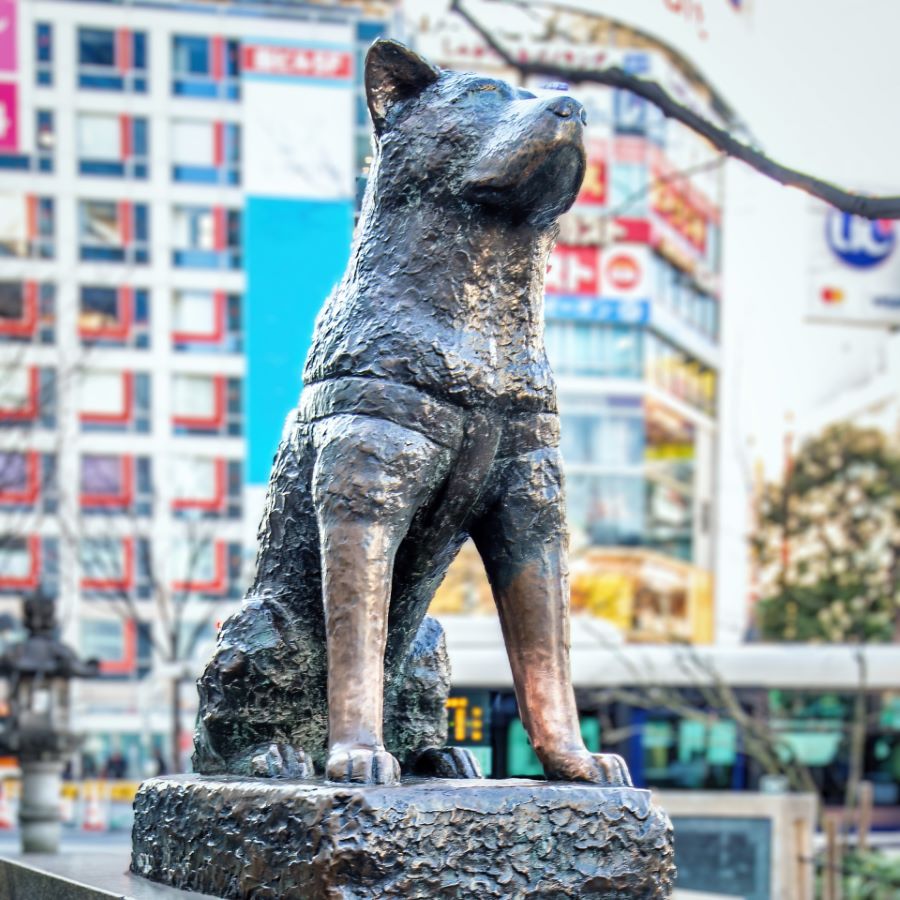
Hachikō has become a symbol of loyalty and fidelity after the death of his owner, Hidesaburō Ueno.
He is immortalized in bronze at Shibuya Station to remind us all not to forget our lovable and cherished companions that we hold dear.
Every day for nine years, Hachikō waited faithfully on one spot expecting his master who had passed away suddenly from a heart attack during work hours at the university.
To commemorate their bond, people often bring small presents like dog food or flowers as offerings when visiting this beloved statue with family & friends. The loyal pooch will forever be remembered by way of Japanese culture due to its well-known story across Japan even now.
SHIBUYA 109

Shibuya 109 is a shopping mall located in the popular Tokyo district of Shibuya.
It’s famous for being one of the city’s two “fashion landmarks,” along with Harajuku.
This 10-story complex hosts boutiques and stores selling stylish, trendy clothes designed by both established fashion labels and up-and-coming designers alike, which have made it so beloved among Japan’s teenagers (or “tweens”) that it even has its own nickname: “MaruKyū” or circle Q.
Inside you’ll find everything from kawaii girl items like shirts featuring anime characters to punk rock-inspired accessories; there are also cafes scattered throughout offering snacks such as Japanese crepes and ice cream sundaes served in adorable animal mugs.
If you’re looking for an unbeatable retail experience filled with incredible people-watching opportunities, then head on over to Shibuya 109 –you
Yoyogi Park
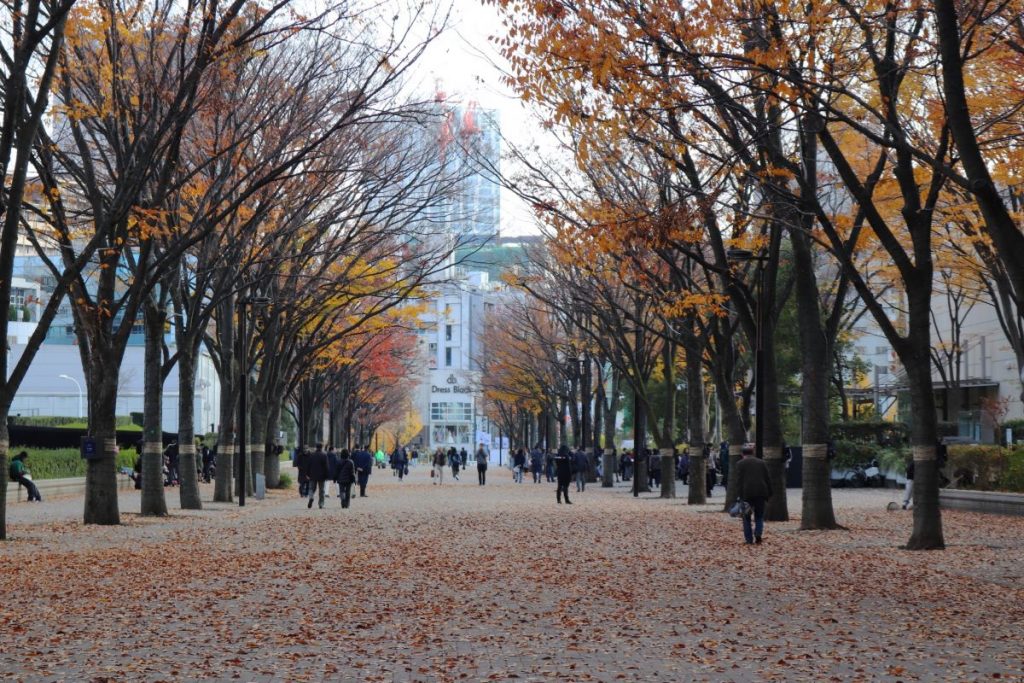
Yoyogi Park located in Shibuya, Tokyo is a great place to catch some fresh air and enjoy city life.
There are many attractions within the park such as outdoor concerts, tea house gatherings, and multiple events that happen throughout the year including art festivals and summer picnics.
The Japanese love meeting up here for small birthday parties or just friendly get-togethers over lunch.
You can also see traditional performances like taiko drumming down by one of its ponds.
It’s worth taking time out from your busy schedule to come explore Yoyogi Park – it offers something unique everywhere you look making it an exciting urban space full of interesting activities to discover.
Shibuya Crossing

Shibuya Crossing, known as the busiest intersection in all of Tokyo, is a must-see spot to experience Japanese culture.
This lively and bustling pedestrian scramble consists of seven streets converging at one point creating an unforgettable encounter with modern Japan.
At rush hour more than 2200 people cross this famous street corner during each light cycle.
On weekends it’s filled with tourists who come from around the world to witness such mayhem—often taking unique photos or videos for their social media accounts too.
The vibrant vibes are accompanied by massive digital screens that showcase major brand advertisements and high-quality visuals making every crossing even more interesting.
Truly Shibuya Crossing offers something special no matter when you decide to visit.
Shibuya Nonbei Yokocho
Nonbei Yokocho, also known as Shibuya “Drunkard’s Alley,” is a fun and vibrant alleyway located in Tokyo.
It has been around since 1945 and continues to be one of the liveliest spots in town with its traditional Japanese bars, street food vendors, and people often swaying out of nearby watering holes.
Enjoy yakitori skewers at Torimatsu or sip on sake while slurping down ramen noodles from Ramen Jiro – whatever your preference may be you’re guaranteed an unforgettable experience here.
Plus it does not have to cost you much either – most dishes are about 800-1000 yen for two which makes this place great value for money.
Yoyogi Hachimangu
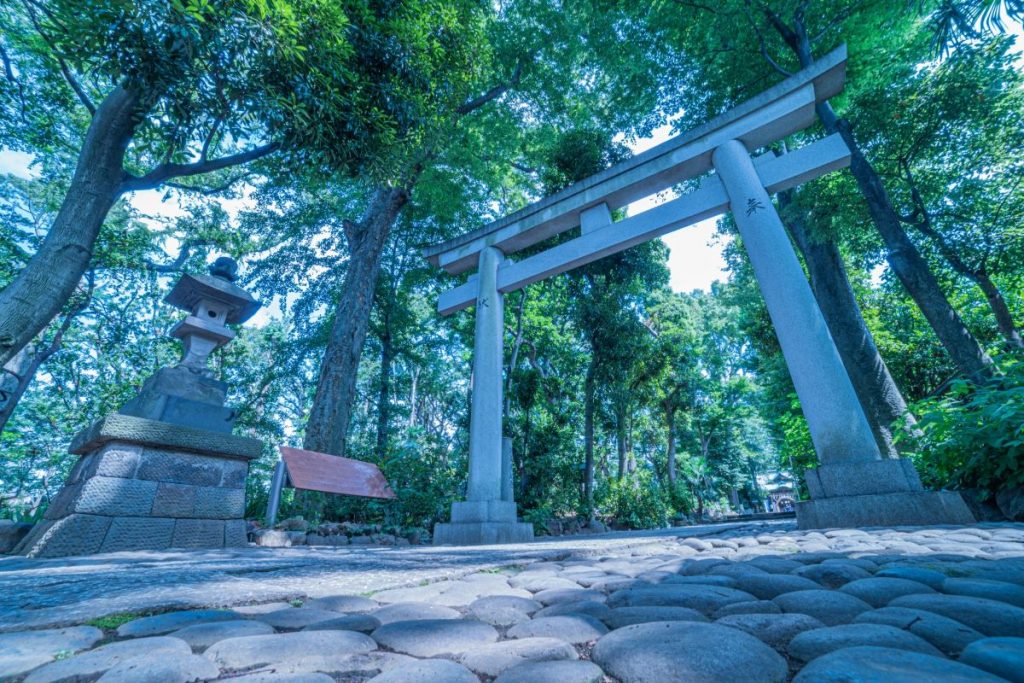
Yoyogi Hachimangu is an ancient Shinto shrine in Tokyo that has a colorful history.
It was founded by the samurai Minamoto no Yoritomo and dedicated to Emperor Ojin, his father’s ancestor.
It first served as a military base before becoming a place of worship centuries later.
Today, there are many annual festivals held at Yoyogi Hachimangu such as Setsubun-sai which sees locals throw roasted soybeans to ward away evil spirits and Oshogatsu where Japanese people welcome the new year with prayers for good luck throughout the upcoming year.
Its rich culture makes it one of Japan’s most famous shrines.
Cosmo Planetarium Shibuya
Cosmo Planetarium Shibuya has redefined stargazing in Tokyo.
Its projection system of 16 million stars and 4K resolution, makes it possible to explore galaxies from all around the world.
The interactive programming allows visitors to see auroras dancing across night skies within a dome-shaped theatre for an unforgettable experience.
With over 300 different shows ranging from guided tours through the Milky Way or discovering distant planets, there is something for everyone.
Takeshita Street
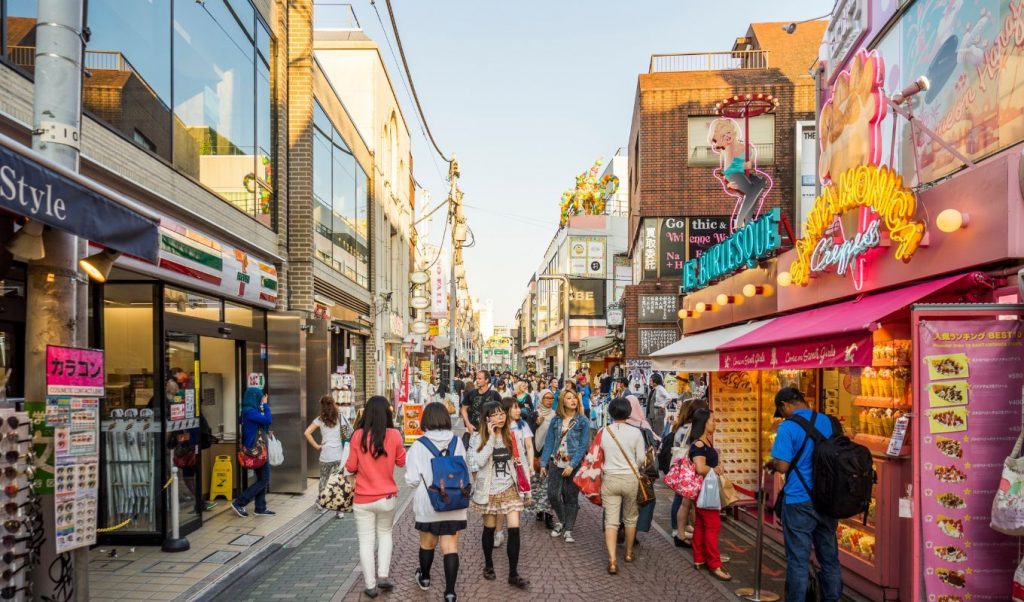
Takeshita Street is a legendary, tourist-filled shopping street in the Harajuku neighborhood of Tokyo.
The energetic and colorful atmosphere draws people from around the world for its unique blend of traditional Japanese culture, fashion boutiques, crepe stands, and extreme varieties of characters that parade up and down its bustling streets day to night.
Some interesting facts about Takeshitas Street? It was created in 1969 as part of an urban renewal project; it has been featured prominently in popular anime series such as Sailor Moon; theme cafes line this iconic road serving themed food items like rainbow-colored parfaits or burgers with soft serve ice cream buns.
With so many delightful things to offer – including clothing stores dedicated exclusively to Lolita fashion style – Takeshita Street will remain a vibrant destination for years to come.
Omotesando

Omotesando is a buzzing street in Tokyo, Japan is known for its fashionable stores and hip shopping districts.
The winding avenue has been compared to the Champs-Elysees of Paris due to its stylish shops, cafés, and restaurants that line the streets.
It’s also home to some iconic architectural styles; from modern buildings like Dior Omotesando or Uniqlo Taipei 101 flagships, to traditional rooftops at Nezu Museum all the way through Bauhaus-inspired Tod’s building.
People come here not only because of their love of fashion but the experience it provides by taking part in different events such as the summertime ‘Flea Market’ which offers everything from vintage clothes, books & accessories – all within a lively atmosphere full of music.
Bunkamura
Bunkamura is a unique combination of both music and art which lies in the heart of Shibuya, Tokyo.
It houses three theaters, an outdoor cinema, five high-end restaurants, two concert halls, and many more attractions that make it one of the most visited spots in town among people who love to enjoy themselves with culture or even shop.
The theater’s interior was designed by Fumihiko Maki – Japan’s renowned architect.
Bunkamura also holds various exhibitions throughout the year like its crowd-pleasing “Illuminations: A Festival for All Senses.” This place sets itself apart from other places as it offers entertainment through captivating visuals created using music technology such as automated lights synchronized to live performances.
Shibuya Station
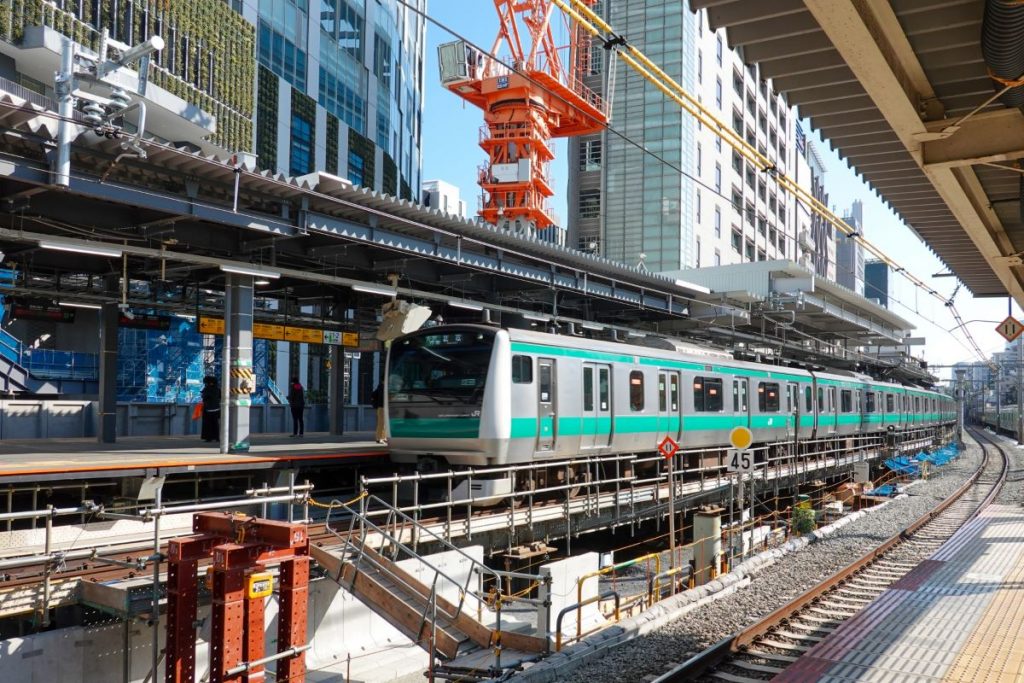
Shibuya Station is one of the busiest train stations in Japan, serving over 2.8 million passengers every day.
Located in Tokyo’s trendy Shibuya district, it is renowned for its iconic ‘scramble crossing’ that sees hordes of pedestrians cross simultaneously and is famously featured in many films like Lost In Translation or The Fast And Furious: Tokyo Drift.
Furthermore, this station has been designated a cultural asset by the Japanese government due to its beautiful architecture; not only does the main building have an impressive glass dome roof but there are also five exits (in addition to numerous underground passages) adorned with fascinating artwork from different artists all around Japan.
This truly makes Shibuya Station more than just an ordinary transport hub – it’s a part destination too.
d47 SHOKUDO
d47 SHOKUDO Shibuya is an eatery with a difference.
Here you can order not only delicious Japanese dishes but also some amazing international fusion ones.
From their signature beef curry bowl to the flavor-packed Mexican Burrito, this place has something for everyone.
With its modern and vibrant atmosphere, d47 SHOKUDO Shibuya is the perfect spot to grab friends or family together and enjoy a tasty meal without breaking your bank account.
And if that wasn’t enough they have even recently started serving vegan options – like the health-conscious Rainbow spring roll plate – so whatever dietary requirement you may have there’s no need to miss out here at d47 SHOKUDO.
Museum of Yebisu Beer
The Museum of Yebisu Beer in Shibuya is a great place for beer lovers.
Here you can explore the history of Japan’s oldest and most beloved brand.
Did you know that November 7th each year marks “Yebizu Day” – an important tradition marking their first sale? There are always events, tasting sessions, workshops happening here too – all making it one of Tokyo’s top attractions.
Stop by to experience over 100 years’ worth of amazing beers today.
Dogenzaka
Dogenzaka is a neighborhood located in Tokyo’s Shibuya ward.
It has been the center of Japan’s entertainment culture since its inception, with stores selling all kinds of media – books, CDs and DVDs – as well as clubs that attract international DJs from around the world.
It also offers unique cultural experiences such as maid cafes where customers can be served by waitresses dressed up like anime characters or butlers for a fun night out.
Dogenzaka also provides numerous restaurants featuring Japanese ingredients and cooked dishes from around the globe —something to satisfy any kind of food connoisseur.
With something for everyone, it’s no wonder why this part of town remains both popular and influential today.
Spain-zaka Slope
Spain-zaka Slope in Tokyo’s Shibuya district is a popular destination for visitors and locals alike.
It offers an eclectic mix of Spanish, Mexican, and Latin American culture, including restaurants, stores that sell traditional crafts from each region as well as art galleries displaying artwork inspired by the cultures represented.
Additionally, it features various street performances throughout the year such as Flamenco dancers or Mariachi bands playing music on weekends.
This makes Spain-zaka Slope one of many vibrant locations to be enjoyed while visiting Japan’s capital city.
Nezu Museum
The Nezu Museum, located in Tokyo’s Aoyama district is a stunning example of traditional Japanese architecture.
It houses an impressive collection of more than 7400 artifacts from ancient times through the modern era.
Interesting facts about this museum include that it was founded by businessman Baron Kinmochi Nezu and first opened its doors to the public in 1941;and two-thirds of the artwork on display at any given time comes from private collections so many pieces are rarely seen outside these walls.
From ukiyo-e woodblock prints to paintings, sculptures, and tea ceremony utensils visitors flock each year for a chance to explore Japan’s rich cultural heritage.
In accordance with tradition, guests may also enjoy peaceful strolls along one or both garden paths winding around koi ponds where swallows fill the air with their sweet song – a truly magical experience no matter what season you visit.
The Shoto Museum of Art
The Shoto Museum of Art in Shibuya, Tokyo is a unique and inspiring art space.
Housed in an old elementary school near Yoyogi Park it offers visitors the chance to experience modern Japanese culture combined with traditional works from Japan’s Kano School.
The collection includes paintings, sculptures and ceramics that span 4 centuries of history as well as contemporary installations from leading local artists.
It also hosts regular workshops where you can learn about brush painting techniques or even create your own masterpiece.
As one of the oldest museums devoted exclusively to Japanese art, this museum provides an enjoyable but educational cultural outing for all ages – perfect when exploring Tokyo’s vibrant city center.
Shibuya Center-Street
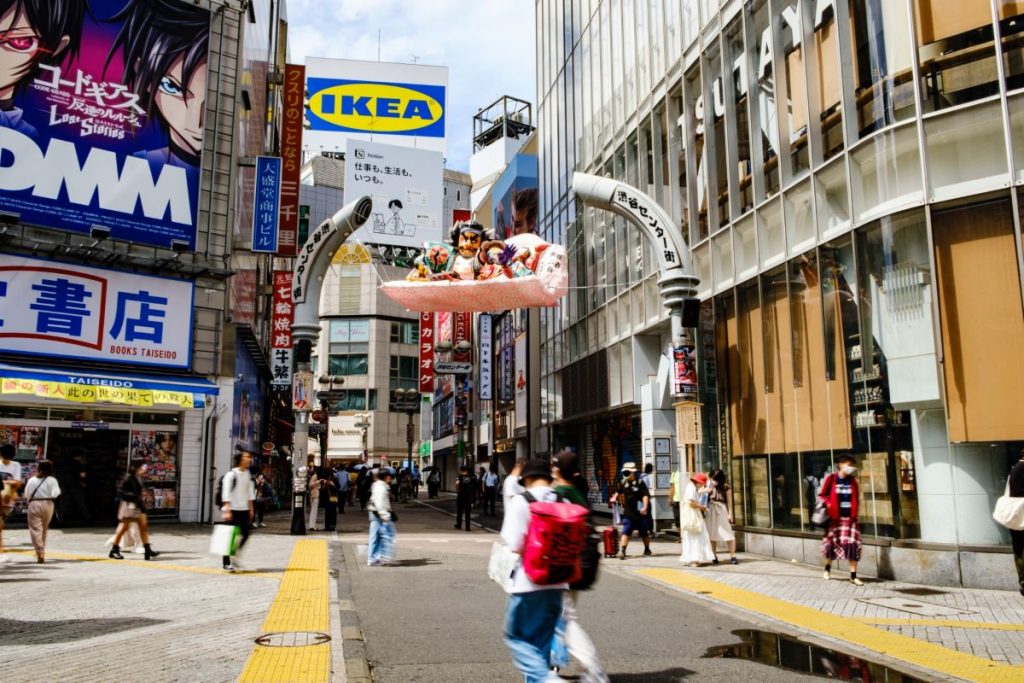
Shibuya Center Gai is a shopping district located in Shibuya, Tokyo that’s beloved by locals and tourists alike.
It’s an iconic spot thanks to its conical street layout with plenty of shops, restaurants, clubs, cafes, and arcades peppering the area.
Plus it has been featured in numerous films like Lost In Translation.
Not only is this place great for souvenir-hunting or people-watching but you can also find rare Japanese snacks here too – from sushi cones filled with ice cream to melon pan slathered in soft serve.
Whatever your taste buds desire; Shibuya Center Gai’s got ya covered.
Konno Hachimangu Shrine
Konno Hachimangu Shrine Shibuya is a renowned shrine that has stood in Tokyo’s bustling Shibuya district since 1609.
It’s famous for its traditional celebrations, such as the “Oto Matsuri” festival which takes place each year on August 15th to pray for bountiful harvests and good fortune.
During this time people from all across Japan flock to the area with their offerings of rice wine, vegetables, and fish–and dance around singing folk songs.
People also come here during New Year’s Eve where they make wishes under 8 bells that are then rung 108 times—a spiritual practice said to bring luck into one’s life.
The Konno Hachimangu Shrine is definitely worth experiencing if you find yourself near Shibuya.
Cat Street In Harajuku
Cat Street in Harajuku is one of Tokyo’s trendiest fashion spots.
It features shopping hotspots and plenty of quirky cafes, each with its own unique vibe.
This street has been home to the biggest names in Japanese street fashion since its beginnings as a market back in 1978.
Cat Street not only attracts all kinds of fashionable people but also cats too—making it an even more wonderful spot for visitors to explore.
Amongst other things you can find some delightful cat-themed restaurants here, where they serve up everything from coffee decorated with adorable kitty faces to cute sandwiches shaped like felines -all reasons why many come flocking here year after year looking for something special
Meiji Jingu Gaien
Meiji Jingu Gaien is a vast park located in central Tokyo.
It boasts over 60,000 trees and has been beloved by the Japanese for centuries due to its serene beauty.
There are many cultural attractions within the park such as traditional festivals like Setsubun Matsuri where attendees throw soybeans at giant mochi rice cakes, or sports events like Meiji Shrine Marathon which draws thousands of runners every year from all around the world.
In addition to these renowned events, there’s also an Olympic-size swimming pool adjacent to one of Japan’s most famous icons: The National Stadium (Kokuritsu Kyogijo).
Amongst other interesting facts about this area is that it was here where Emperor Meiji had his last resting place with his wife Empress Shoken on November 1st, 1921 – visitors still pay homage today inside of their shrine made up entirely out of cypress wood.
Explore Harajuku
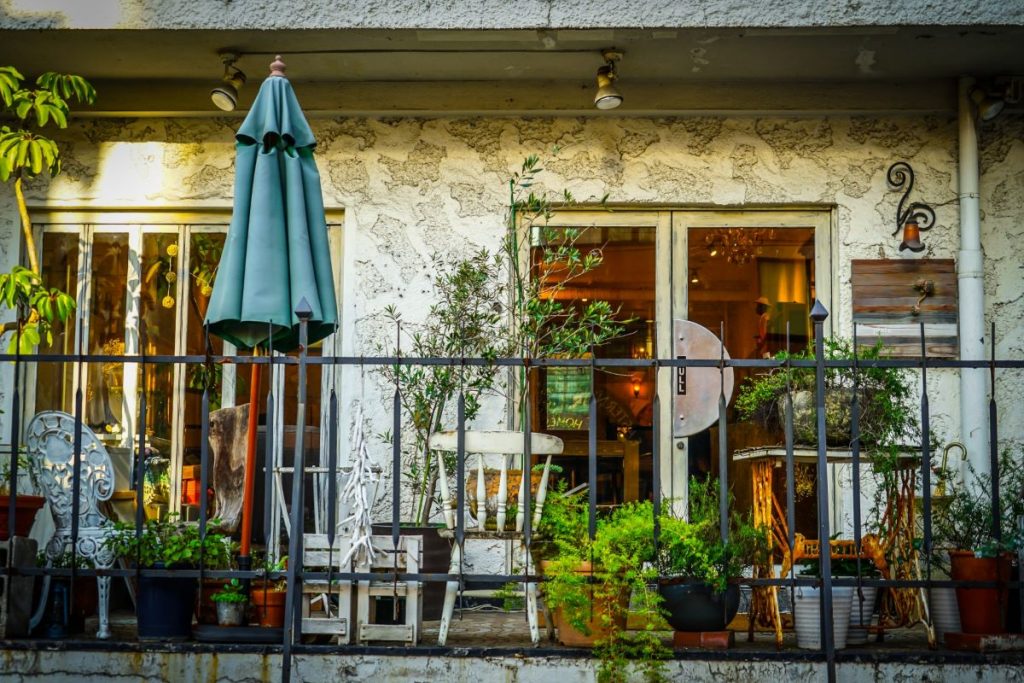
Explore Harajuku a neighborhood in Tokyo renowned for its vibrant fashion scene, quirky culture, and unique cafes.
It’s an entertaining place to explore where you can find traditional Japanese streetwear pieces as well as more modern styles ranging from kawaii cosplay to Lolita gothic looks.
There are also numerous boutiques selling vintage clothing, posters, and magazines related to the local subcultures like Shibuya-kei, J-rock and visual kei.
Don’t forget the distinct accessories stores that give your outfits an attractive edge.
Visit at night too when there are live shows with DJs spinning catchy tunes till late hours—the atmosphere here is always buzzing with excitement.
How To Get To Shibuya By Train
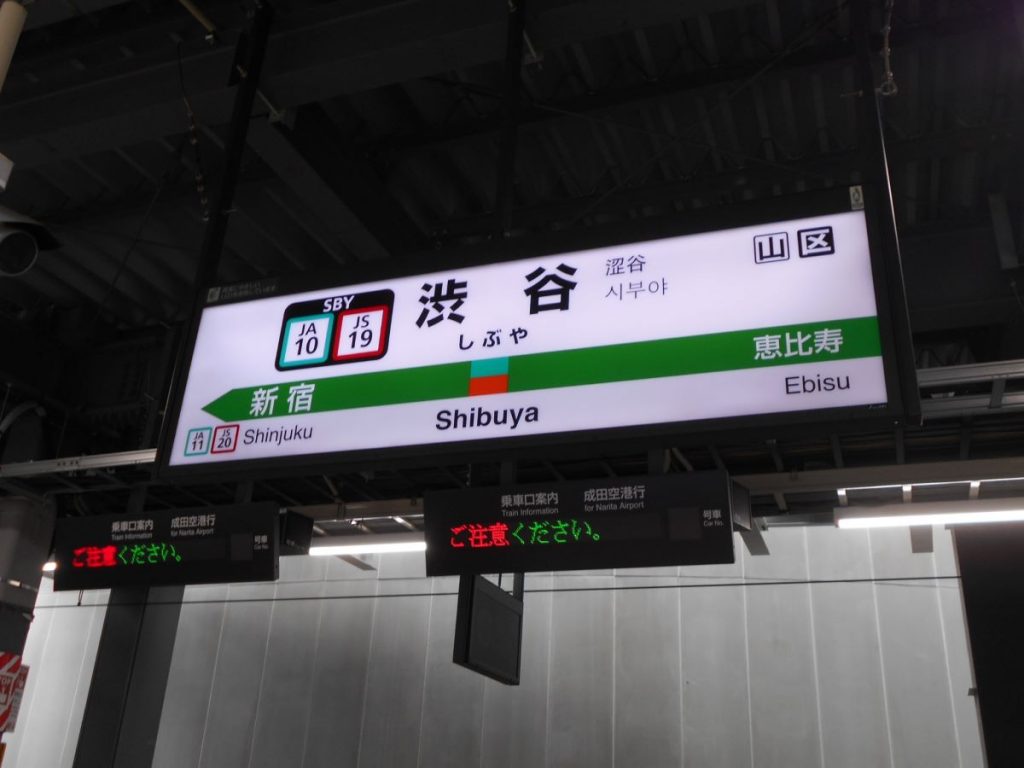
Shibuya is easily accessible by train from most places in Tokyo.
The best option for getting to Shibuya would be the JR Yamanote Line, which runs directly through Shibuya Station.
You can board this line at a number of stations including Shinagawa and Hamamatsucho in central Tokyo.
Depending on where you are coming from, there may also be other lines that run near or into Shibuya Station such as the Tokyu Toyoko Line, Keio Inokashira Line, Hanzomon Subway Lines, and more.
Once you’ve arrived at your desired platform just look up signs pointing towards the direction of exits leading out to different areas within walking distance of famous landmarks like Hachiko Square or Takeshita Street.

